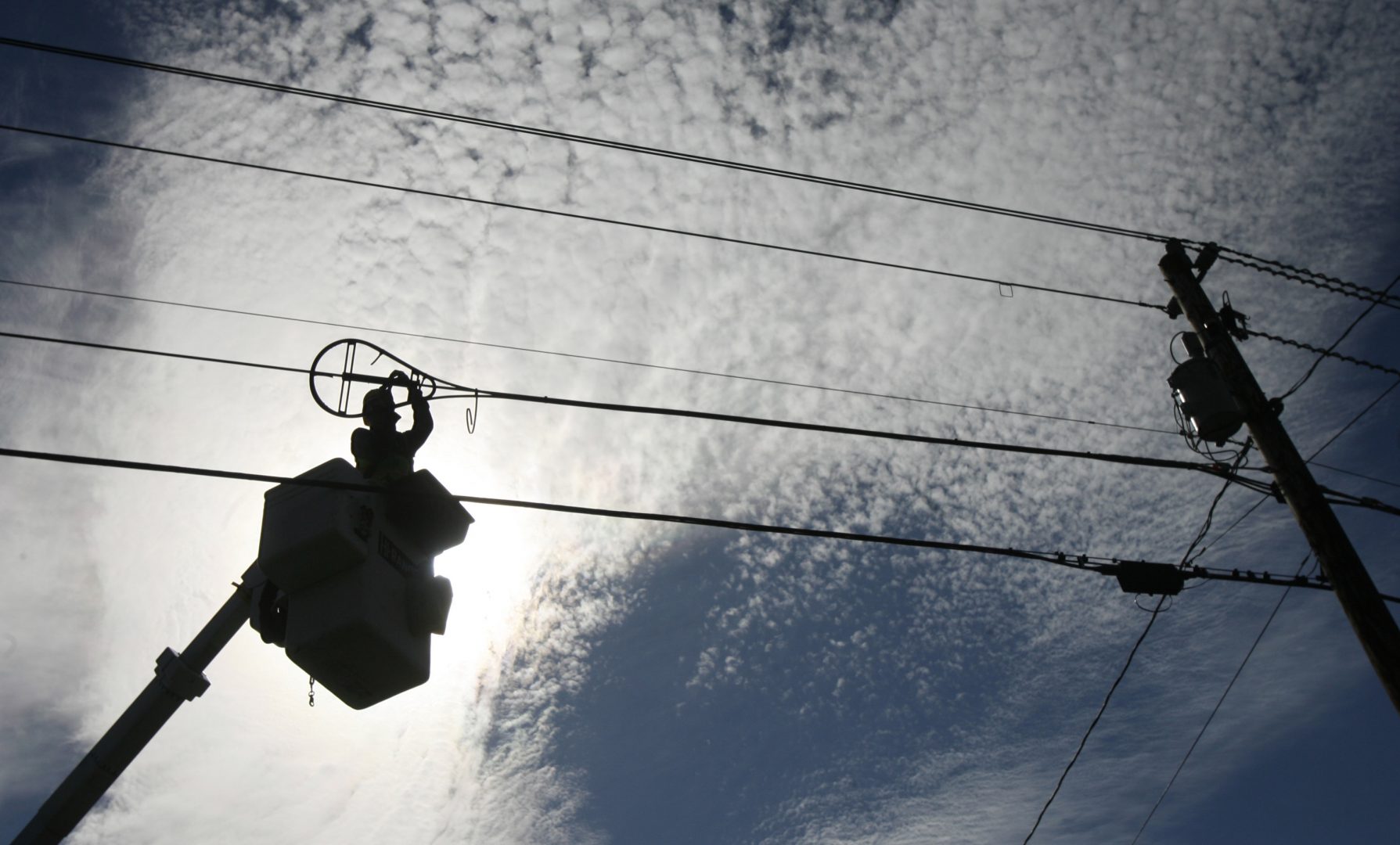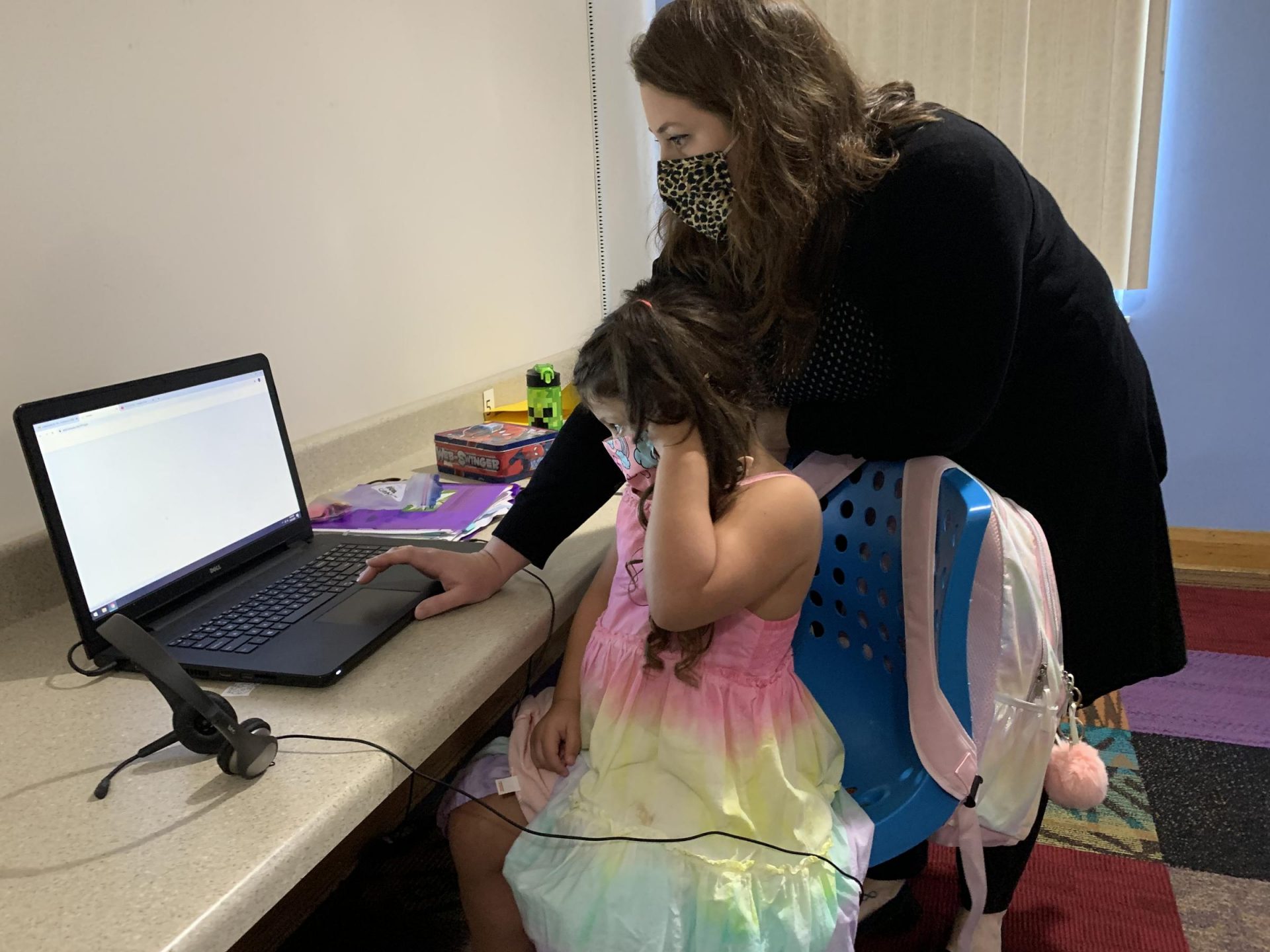
FILE PHOTO: A worker in rural Vermont installs fiber-optic cable to deliver broadband internet service.
Toby Talbot / AP Photo

FILE PHOTO: A worker in rural Vermont installs fiber-optic cable to deliver broadband internet service.
Toby Talbot / AP Photo

Toby Talbot / AP Photo
FILE PHOTO: A worker in rural Vermont installs fiber-optic cable to deliver broadband internet service.
(Pittsburgh) — The latest coronavirus relief bill included $7 billion to expand broadband internet access, and Pennsylvania is expected to get $850 million of the money, according to Gov. Tom Wolf’s office.
The aid shows that efforts to achieve universal broadband access have gained momentum, said Penn State telecommunications professor Sascha Meinrath. But he noted that the $7 billion included in the COVID relief package “is the tip of the iceberg in terms of the amount of funding that the U.S. needs to spend on this critical infrastructure … We need tens, potentially hundreds of billions of dollars poured into universal service.”
By forcing people to work from home, attend classes online, and switch to telemedicine, COVID-19 has underscored the importance of broadband, and highlighted the scope of the nation’s digital divide, which disproportionately impacts rural communities and the poor.
The governor’s office has yet to receive guidance on how it may use the broadband funding that was included in December’s COVID relief package. But Congress approved $300 million to build out rural broadband infrastructure, while designating $3.2 billion to subsidize the cost of broadband service for low-income households and recently laid-off or furloughed workers. Those who qualify for the emergency benefit will receive $50 a month.
Meinrath noted that pricing can be a barrier for consumers even in areas where broadband infrastructure exists. So while “rural communities are systematically underserved,” Meinrath said, “We have major divides in urban areas as well, particularly among poor and minority constituencies.”

Sarah Schneider / WESA
Colleen Vilsack, left, helps a student during virtual learning at the Millvale Boys and Girls Club.
Still, while there is less funding available for extending broadband into rural areas, advocates say the investment is hugely important.
“We’ve certainly seen an increase in support for [deploying broadband] as a result of the pandemic. I think it really highlighted for everybody [that] the Internet’s not a nice-to-have: It’s a necessity,” said Liam Migdail, a spokesperson for the Pennsylvania Farm Bureau. The bureau has long advocated for increased broadband access: Migdail said it is key to remaining competitive in a global market where agricultural technology continues to advance.
There are widely varying estimates of the number of Pennsylvanians who lack broadband. While the FCC has found that 6 percent do not have broadband, Meinrath said his research suggests that between one-third to half of the population lack the service. The Federal Communications Commission defines broadband as an internet connects with minimum download speeds of 25 mbps and upload speeds of 3 mbps.
Washington County farmer Drew Manko said his service falls far short of that standard.
“To put it in a term that a lot of people understand, we can’t stream Netflix,” he said. “It’ll take me an hour or so to download a PDF on this connection – and that’s when it works, because the internet doesn’t always work.”
Manko raises rare and heritage breeds of livestock with his fiancée at The Ross Farm in Eighty Four, Pa. While they’ve shifted toward commercial retail sales due to the pandemic, restaurants and local butcher shops remain a key part of their customer base. And Manko said he relies on social media to market directly to those businesses.
Poor internet connection also stops Manko from using apps that help to track livestock health and manage day-to-day operations. His fiancée was able to complete a virtual veterinary technology course at California University of Pennsylvania only after the university supplied a wireless hotspot. And the device did not always work, Manko said.
Manko said connectivity has long been a problem – even though the state police barracks next door has high-speed service.
“These [internet service providers] will not run the fiber optic, the extra thousand yards to our house … because it’s not profitable for them,” Manko said. But he was encouraged by policymakers’ increased interest in the issue. “I think these government programs that they’re working on right now are key,” he said.
The COVID aid package also includes $1.9 million to remove equipment manufactured by Chinese companies considered to be national security threats from U.S. networks. An additional $98 million is slated to help improve broadband maps, which have long been criticized for underestimating the number of unconnected Americans.
The money comes after the FCC awarded nearly $370 million to companies that successfully bid late last year to deploy broadband in unserved parts of Pennsylvania. Gov. Wolf also approved legislation in November to create a state-level grant program to expand broadband infrastructure. Six months earlier, he had directed $625 million in federal CARES Act funding to counties, and some used a portion of the money to expand high-speed internet options, with mixed results.
With adequate funding and better planning at the state and federal levels, Meinrath estimated that the U.S. could achieve universal broadband access in 10 to 15 years.

A collection of interviews, photos, and music videos, featuring local musicians who have stopped by the WITF performance studio to share a little discussion and sound. Produced by WITF’s Joe Ulrich.
The days of journalism’s one-way street of simply producing stories for the public have long been over. Now, it’s time to find better ways to interact with you and ensure we meet your high standards of what a credible media organization should be.